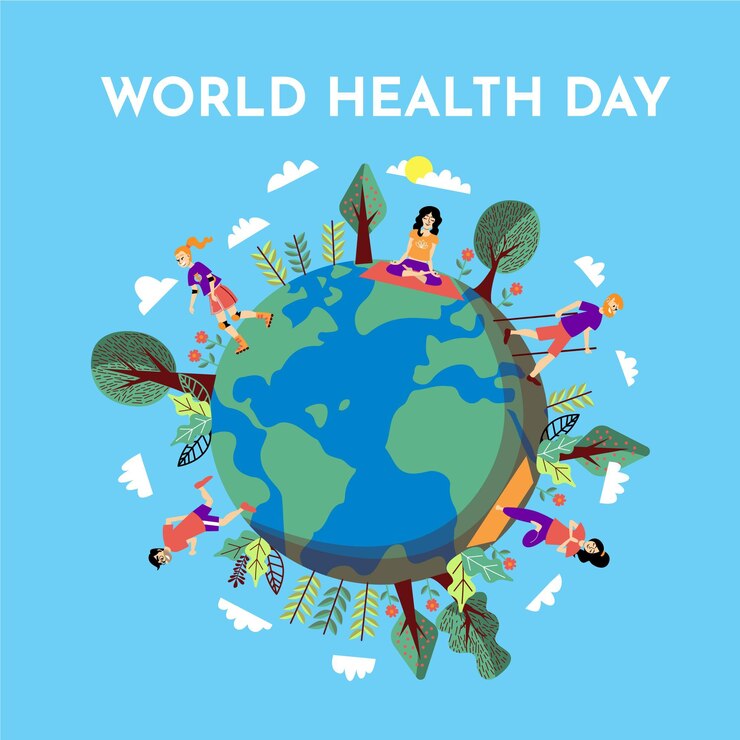Project Objective
The overarching goal of this project is to develop and deploy AI, data science, and mathematical methodologies and technologies for disease detection, data management and processing, and real-time model validation and calibration using advanced computational methods.
Our NSERC-funded program focuses on modeling ecological dynamics in changing environments by integrating diverse data sources. We have collected a vast array of locally relevant, conventional, and unconventional data from public (e.g., social media, news) and private sources, including African infectious disease portals, COVID-19 dashboards, and Monkeypox stigmatization studies.
We have also developed AI-powered interactive data visualization frameworks to track disease outbreaks and health trends. Through government collaborations in 10 African countries, we have access to District Health Information System 2 (DHIS2) data portals. Additionally, partnerships with Canadian government agencies, hospitals, and research institutes provide access to Acute Care Enhanced Surveillance (ACES), wastewater-based surveillance data, and more.
Our dataset spans animal and human health, environmental, demographic, and financial domains, ensuring broad applicability. Data curation follows FAIR principles, while Indigenous community data adheres to OCAP® standards. We continue refining techniques to detect potential signals from unconventional sources and enhance data integration across diverse systems.
Key Areas

- Including modelling of measles, H5N1, mpox, COVID-19, RSV, pandemic influenza, malaria and emerging infectious diseases
- Climate-sensitive diseases such as Lyme disease, West Nile virus, and dengue risk prediction
- Disease outbreaks in nursing homes
- Polio surveillance
- Real-time surveillance, hotspot detection, and early warning systems for disease outbreaks
- Novel and unconventional data sources for combating diseases
- AI-powered mosquito surveillance systems
- Drug resistance
- Immunization policy
- Hospital infection control
- Food safety and foodborne disease
- Health economics

- AI for Pandemic and Epidemic Preparedness and Response
- AI’s positive impact on communities
- AI and data governance, ethics, and security
- Need for AI compute
- Scaling AI innovations
- Making Data Actionable for policies
- Complex data analytics, including social media disinformation scale and impact
- AI-powered solutions for public health and environmental challenges
- Data being the New Oil; Alliance for Intelligence on Data a matter of national security.
- Leveraging novel, unconventional data sources (e.g., social media data) for combating diseases and improving health outcomes.

- Air quality monitoring systems
- Greenhouse gas emissions quantification and localization
- Impact of anthropogenic disturbances on human and environmental health

- Human behavioral dynamics in epidemics
- Social media misinformation and its public health impact
- The role of social media data in tracking public sentiment and disease spread
- Computational advertising, influence spread, and online social network dynamics
- Media’s influence during public health emergencies
- Self-medication and stigmatization in healthcare
- Impact of social media on public health, including misinformation, the scale of social media misinformation, and leveraging social media for public sentiment analysis.

- Mathematics education and addressing math anxiety
- ‘Ask a Mathematician’ initiative
- Community engagement research

- Air quality monitoring systems
- Greenhouse gas emissions quantification and localization
- Impact of anthropogenic disturbances on human and environmental health

- AI and data science in supporting sustainable development and global health, particularly in the context of the Africa-Canada partnership.
- The intersection of AI, public policy, and governance, focusing on the importance of responsible AI development for health systems and societal resilience.
- Research translation
Some of our Refereed Journal Publications so far under this Theme
Sharma, Y., Laison, E. K., Philippsen, T., Ma, J., Kong, J., Ghaemi, S., ... & Nasri, B. (2024). Models and data used to predict the abundance and distribution of Ixodes scapularis (blacklegged tick) in North America: a scoping review. The Lancet Regional Health–Americas, 32.
Yuh, M. N., Ndum Okwen, G. A., Miong, R. H. P., Bragazzi, N. L., Kong JD., Movahedi Nia, Z., ... Patrick Mbah, O. (2024). Using an innovative family-centered evidence toolkit to improve the livelihood of people with disabilities in Bamenda (Cameroon): a mixed-method study. Frontiers in Public Health, 11, 1190722.
Nunes, M. C., Thommes, E., Fröhlich, H., Flahault, A., Arino, J., Baguelin, M., Kong JD ... Coudeville, L. (2024). Redefining pandemic preparedness: Multidisciplinary insights from the CERP modelling workshop in infectious diseases, workshop report. Infectious Disease Modelling.
Kaur, M., Cargill, T., Hui, K., Vu, M., Bragazzi, N. L., Kong JD (2024). A Novel Approach for the Early Detection of Medical Resource Demand Surges During Health Care Emergencies: Infodemiology Study of Tweets. JMIR Formative Research, 8, e46087.
Bain, L. E., Yankam, B. M., Kong, J. D., Nkfusai, N. C., Badru, O. A., Ebuenyi, I. D., ... & Adeagbo, O. (2023). Global Health Mentorship: Challenges and Opportunities for Equitable Partnership. BMJ global health, 8(11), e013751.
Kaur, M., Bragazzi, N. L., Heffernan, J., Tsasis, P., Kong JD (2023). COVID-19 in Ontario Long-term Care Facilities Project, a manually curated and validated database. Frontiers in Public Health, 11, 1133419.
Nia ZM, Ahmadi A, Mellado B, Wu J, Orbinski J, Asgary A, Kong JD. Twitter-based gender recognition using transformers. Math Biosci Eng. 2023 Aug 3;20(9):15962-15981. doi: 10.3934/mbe.2023711. PMID: 37919997.
Movahedi Nia, Z., Bragazzi, N., Asgary, A., Orbinski, J., Wu, J., Kong JD (2023). Mpox Panic, Infodemic, and Stigmatization of the Two-Spirit, Lesbian, Gay, Bisexual, Transgender, Queer or Questioning, Intersex, Asexual Community: Geospatial Analysis, Topic Modeling, and Sentiment Analysis of a Large, Multilingual Social Media Data. Journal of Medical Internet Research. 25, e45108.
Fevrier, K., Effoduh, J. O., Kong JD, Bragazzi, N. L. (2023). Artificial Intelligence, Law, and Vulnerabilities. In AI and Society. : 179-196.
Ji J, Wang H, Wang L, Ramazi P, Kong JD, Watmough J. Climate-dependent effectiveness of nonpharmaceutical interventions on COVID-19 mitigation. Mathematical Biosciences. 2023 Dec 1;366:109087.
Zahra Movahedi Nia, Ali Ahmadi, Bruce Mellado, Jianhong Wu, James Orbinski, Ali Asgary, Jude D. Kong. Twitter-based gender recognition using transformers. Mathematical Biosciences and Engineering, 2023, 20(9): 15962-15981. doi: 10.3934/mbe.2023711.
Avusuglo WS, Bragazzi N, Asgary A, Orbinski J, Wu J, Kong JD. Leveraging an epidemic–economic mathematical model to assess human responses to COVID-19 policies and disease progression. Scientific Reports. 2023 Aug 8;13(1):12842.
Movahedi Nia Z, Bragazzi NL, Ahamadi A, Asgary A, Mellado B, Orbinski J, Seyyed-Kalantari L, Woldegerima WA, Wu J, Kong JD. Off-label drug use during the COVID-19 pandemic in Africa: topic modelling and sentiment analysis of ivermectin in South Africa and Nigeria as a case study. Journal of the Royal Society Interface. 2023 Sep 13;20(206):20230200.
Sekkak I, Nasri BR, Rémillard BN, Kong JD, El Fatini M. A stochastic analysis of a SIQR epidemic model with short and long-term prophylaxis. Communications in Nonlinear Science and Numerical Simulation. 2023 Sep 15:107523.
Han Q, Bragazzi N, Asgary A, Orbinski J, Wu J, Kong JD. Estimation of epidemiological parameters and ascertainment rate from early transmission of COVID-19 across Africa. Royal Society Open Science. 2023 Sep 20;10(9):230316.
Nia, Z. M., Bragazzi, N. L., Wu, J., & Kong, J. D. (2023). A Twitter Dataset for Monkeypox, May 2022. Data in Brief, 109118.
Movahedi Nia, Z., Bragazzi, N., Asgary, A., Orbinski, J., Wu, J., & Kong, J. (2023). Mpox Panic, Infodemic, and Stigmatization of the Two-Spirit, Lesbian, Gay, Bisexual, Transgender, Queer or Questioning, Intersex, Asexual Community: Geospatial Analysis, Topic Modeling, and Sentiment Analysis of a Large, Multilingual Social Media Database. Journal of Medical Internet Research, 25, e45108.
Puce, L., Okwen, P., Yuh, M. N., Akah, G., Pambe Miong, R. H., Kong, J., & Bragazzi, N. L. (2023). Well-being and quality of life in people with disabilities practicing sports, athletes with disabilities, and para-athletes: Insights from a critical review of the literature. Frontiers in Psychology, 14, 242.
Wu, T., Imrit, M. A., Movahedinia, Z., Kong, J., Woolway, R. I., & Sharma, S. (2023). Climate tracking by freshwater fishes suggests that fish diversity in temperate lakes may be increasingly threatened by climate warming. Diversity and Distributions, 29(2), 300-315.
Kong, J. D., Akpudo, U. E., Effoduh, J. O., & Bragazzi, N. L. (2023, February). Leveraging Responsible, Explainable, and Local Artificial Intelligence Solutions for Clinical Public Health in the Global South. In Healthcare (Vol. 11, No. 4, p. 457). MDPI.
Puce, L., Okwen, P., Yuh, M. N., Akah, G., Pambe Miong, R. H., Kong, J., & Bragazzi, N. L. (2023). Well-being and quality of life in people with disabilities practicing sports, athletes with disabilities, and para-athletes: Insights from a critical review of the literature. Frontiers in Psychology, 14, 242.
Bragazzi NL, Han Q, Iyaniwura SA, Omame A, Shausan A, Wang X, Woldegerima WA, Wu J, Kong JD. Adaptive changes in sexual behavior in the high-risk population in response to human monkeypox transmission in Canada can help control the outbreak: Insights from a two-group, two-route epidemic model. J Med Virol. 2023 Apr;95(4):e28575. doi: 10.1002/jmv.28575. PMID: 36772860.
